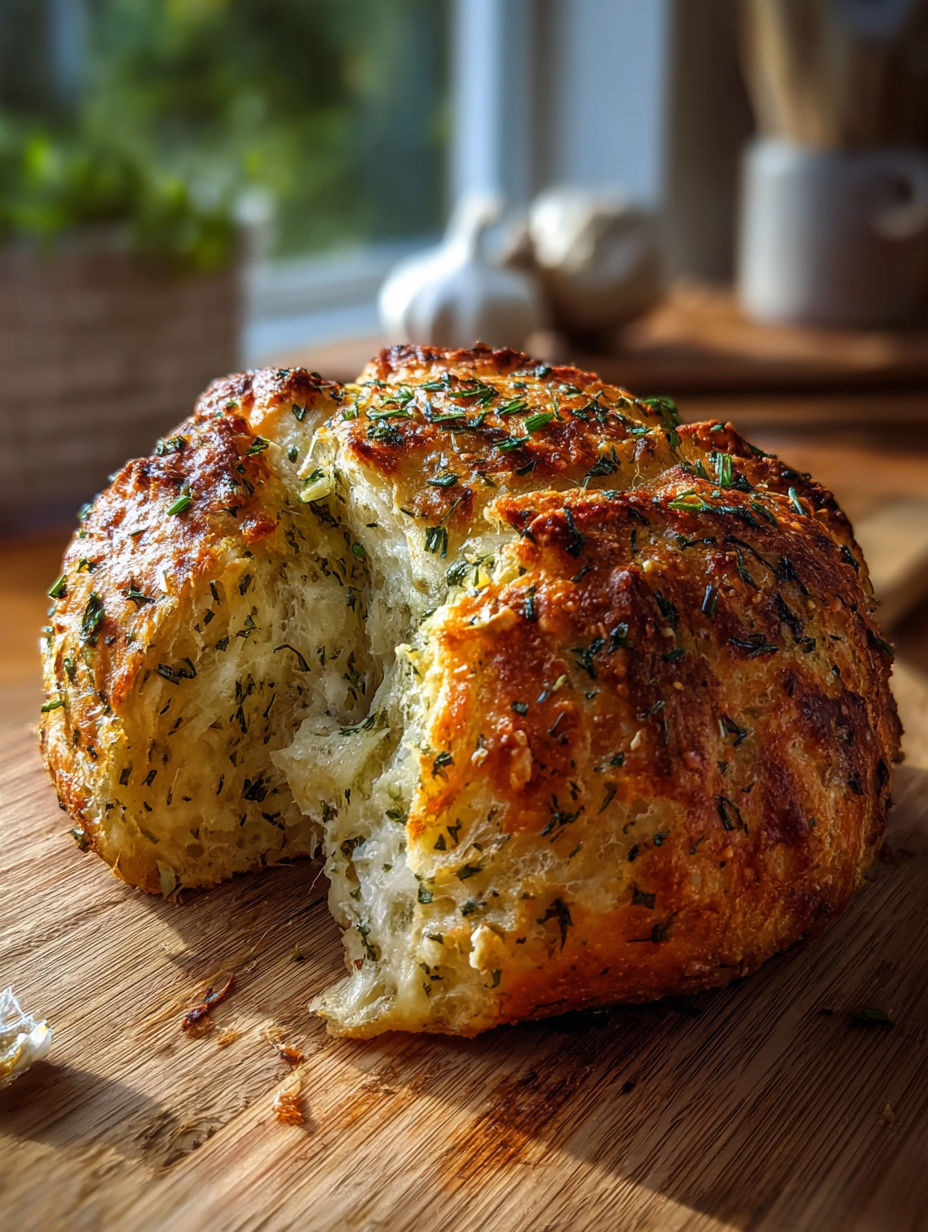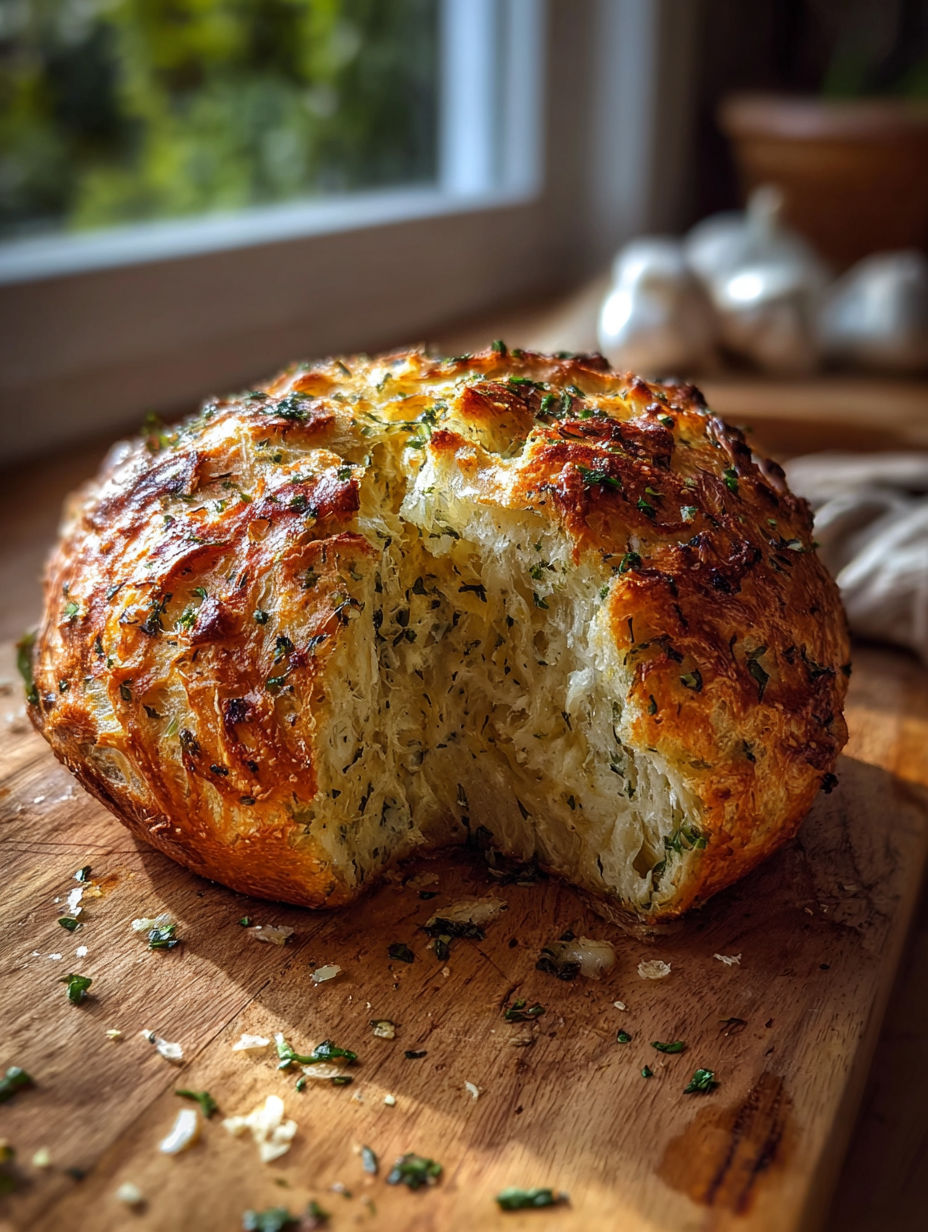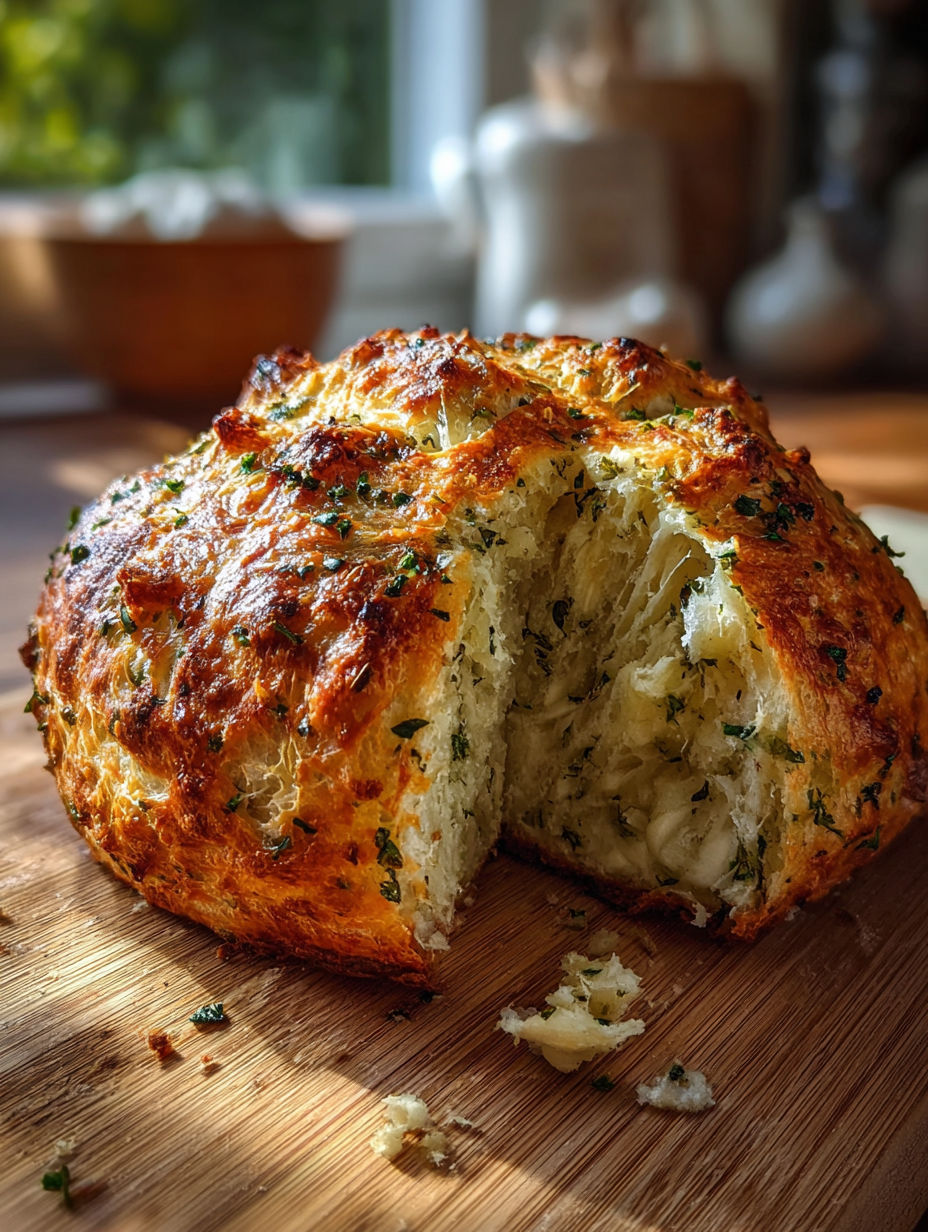 Save
Save
This garlic herb Dutch oven bread is my favorite way to bring fresh homemade bread to the table without fuss. It fills the kitchen with the irresistible aroma of garlic and herbs while baking, making it feel like a special occasion even on an ordinary day.
I first made this bread on a quiet weekend and was amazed at how easy it was to get bakery-quality results at home
Ingredients
- 3 cups all-purpose flour: provides the sturdy base for great texture choose freshly milled if possible for extra flavor
- 1 1/2 teaspoons salt: brings out the flavors and balances the garlic and herbs
- 1/2 teaspoon instant yeast: helps the bread rise gently during the long rest opt for active fresh yeast by proofing if preferred
- 1 1/2 cups warm water: hydrates the flour to a sticky dough crucial for crumb softness
- 4 cloves garlic minced: add a bright punch that permeates the bread make sure to use fresh garlic for the best flavor
- 2 tablespoons fresh herbs such as rosemary and thyme chopped: these bring fragrant earthiness better than dried herbs in this recipe
- 1 tablespoon olive oil: prevents sticking and adds subtle richness use a good quality extra virgin olive oil for aroma
Instructions
- Build the Dry Base:
- In a large bowl, whisk together the flour, salt, and instant yeast. Mixing these thoroughly ensures even distribution so the dough rises properly and is seasoned throughout.
- Add the Wet Ingredients:
- Pour in the warm water then mix in the minced garlic and chopped herbs. Stir everything together until you get a wet, shaggy dough that looks messy but is well combined.
- Let It Rest Overnight:
- Cover the bowl tightly with plastic wrap or a towel and leave it at room temperature for 12 to 18 hours. This long fermentation develops complex flavor and helps build the bread’s structure without kneading.
- Preheat the Dutch Oven:
- About 30 minutes before baking, place your Dutch oven with its lid inside the oven and set the temperature to 450 degrees Fahrenheit. Letting the pot get very hot is key to creating a crispy crust.
- Prepare the Dough for Baking:
- Sprinkle a clean surface with flour and carefully scrape the dough out onto it. Shape the dough loosely into a round ball by folding the edges underneath. This helps the bread keep its shape as it bakes.
- Add Oil and Transfer Dough:
- Remove the hot Dutch oven from the oven carefully and brush or pour in the olive oil to coat the bottom. Place the shaped dough ball into the pot and cover with the lid.
- Bake Covered and Uncovered:
- Bake the bread covered for 30 minutes to trap steam for a tender interior. Then remove the lid and bake for another 15 to 20 minutes to brown the crust beautifully. Keep an eye on the color so it doesn't darken too much.
- Cool Before Slicing:
- Take the bread out and transfer it to a wire rack to cool completely. Cutting too soon can make the crumb gummy so patience here rewards you with perfect texture.

This bread has become a staple at our family dinners, especially when we want something cozy but impressive without last-minute stress.
Storage Tips
Wrap leftover bread tightly in foil or a reusable cloth bag to keep the crust from softening. Store at room temperature for up to two days. For longer storage slice and freeze in an airtight bag and toast from frozen for best texture.
Ingredient Swaps
Feel free to swap the herbs for any fresh combination like oregano and basil for a Mediterranean twist. You can also substitute garlic powder if you want a milder flavor, though fresh garlic is best. Using bread flour instead of all-purpose will give a chewier crust if you prefer.
Serving Ideas
This bread shines alongside a bowl of soup or stewed greens. Drizzle slices with extra olive oil and sprinkle a pinch of sea salt for a simple snack. It also makes an excellent base for bruschetta topped with fresh tomatoes or avocado.

This bread delivers rustic flavor and elegant aroma, perfect for easy homemade baking.
Frequently Asked Recipe Questions
- → Why is resting the dough for 12-18 hours recommended?
Resting allows the yeast to ferment slowly, enhancing the bread’s flavor and improving texture by developing gluten.
- → What is the role of the Dutch oven in baking this bread?
The Dutch oven traps steam during baking, which helps form a crisp, golden crust while keeping the inside soft.
- → Can other herbs be used instead of rosemary and thyme?
Yes, herbs like oregano, basil, or sage can be substituted to alter the aroma and flavor to your preference.
- → How important is it to preheat the Dutch oven?
Preheating ensures the bread starts baking at high heat right away, creating the ideal environment for crust formation.
- → What adjustments are needed if baking at a different altitude?
Higher altitude may require slight changes in water amount or rising times to compensate for drier air and lower pressure.
